"For Lambert the encyclopedia is a heavenly meadow where the “flowers of literature” flourish together to attract faithful readers by their sweetness."
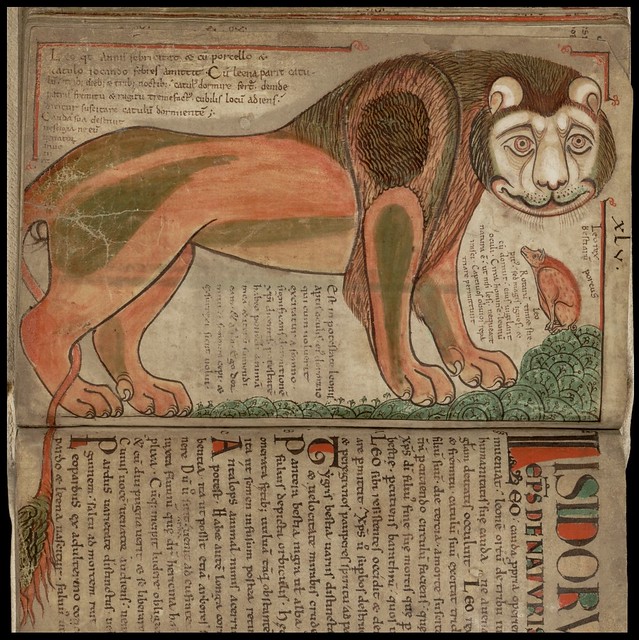
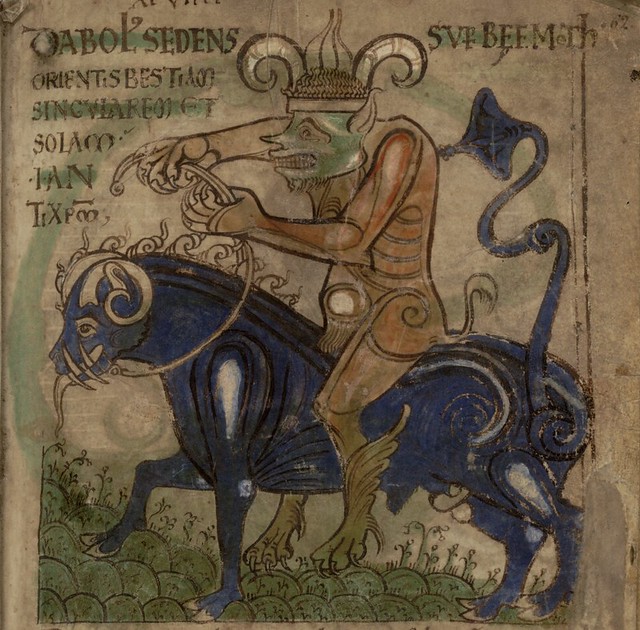
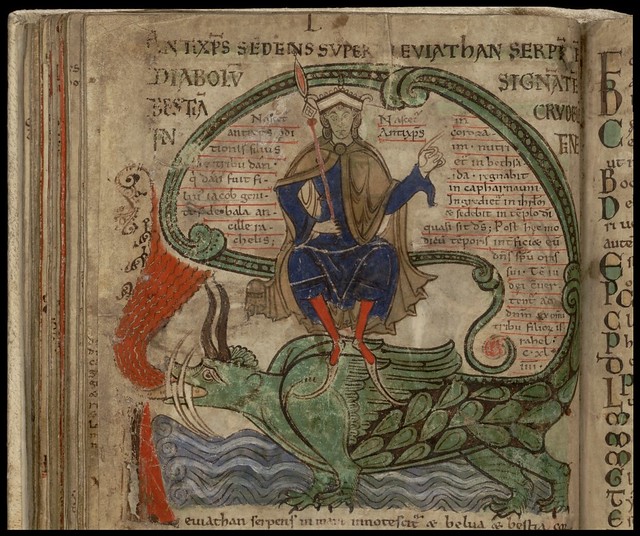
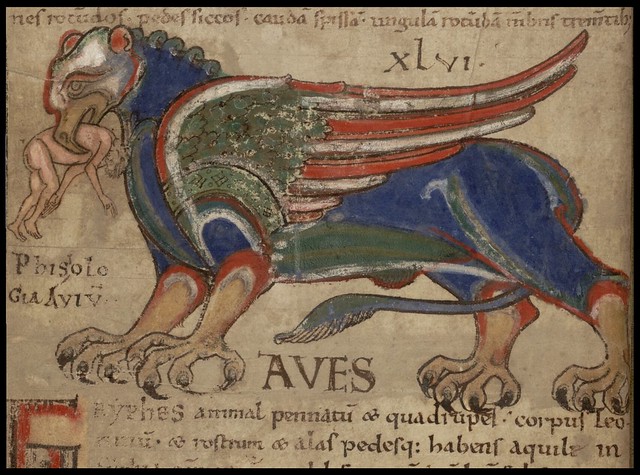
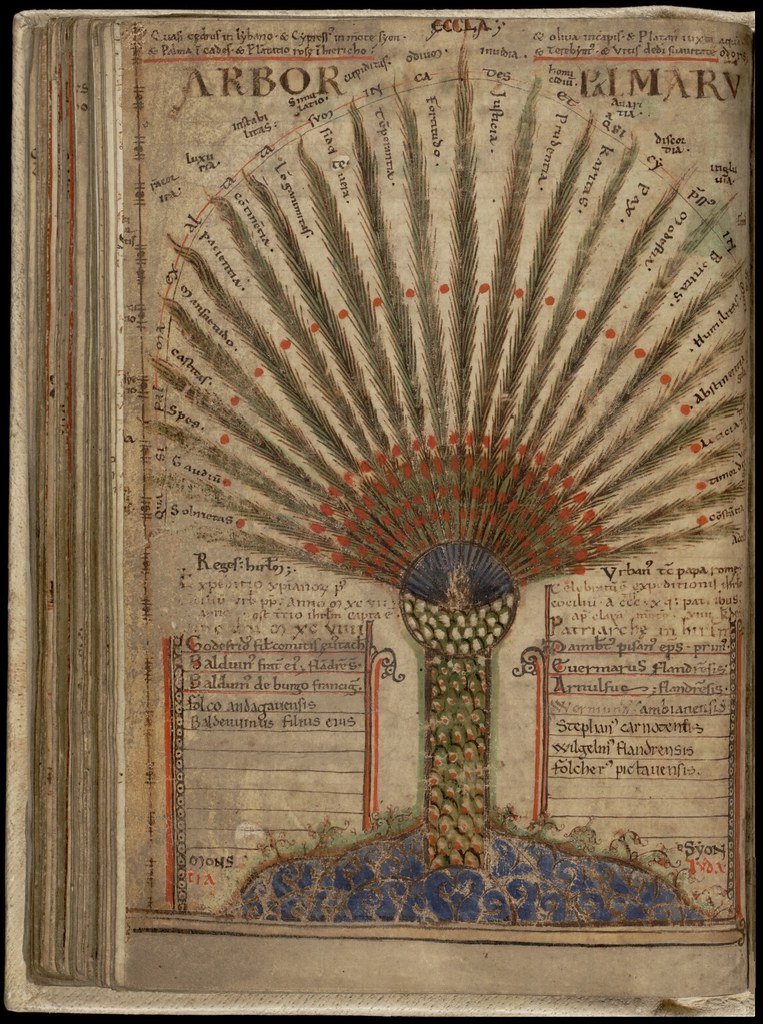
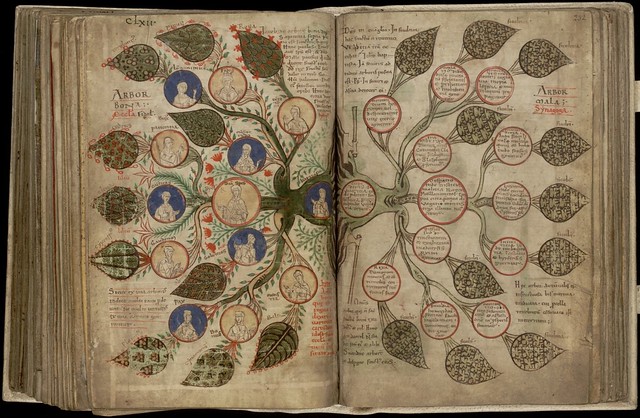


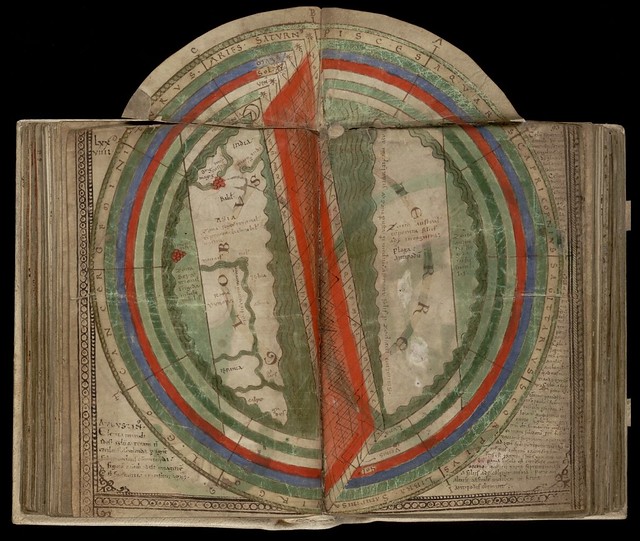
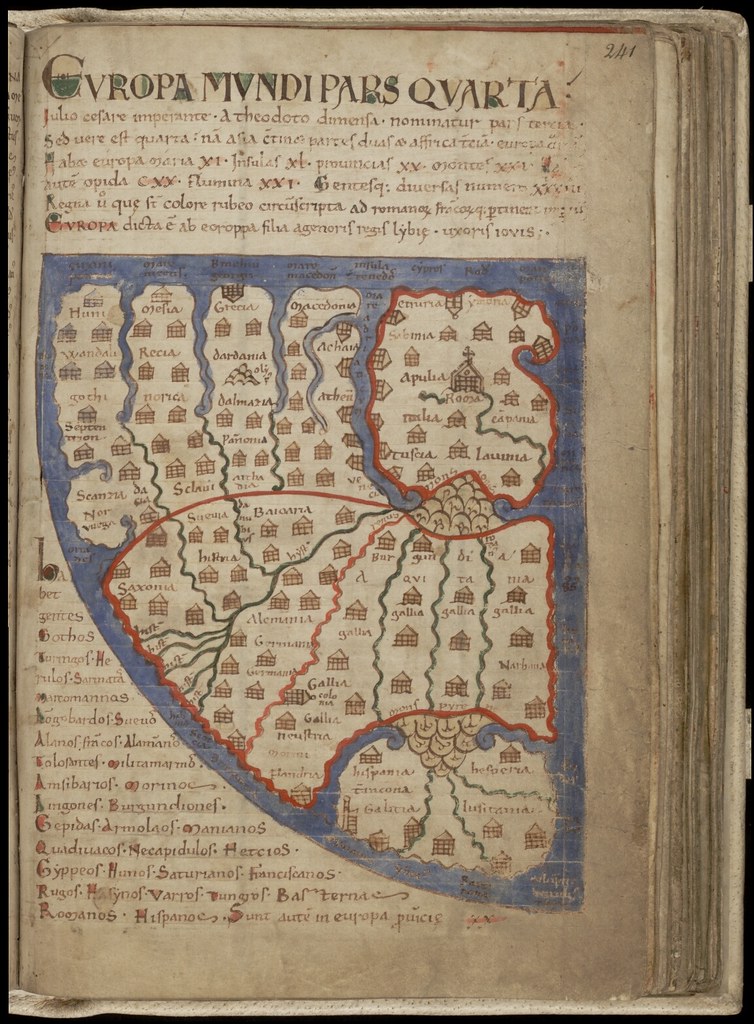


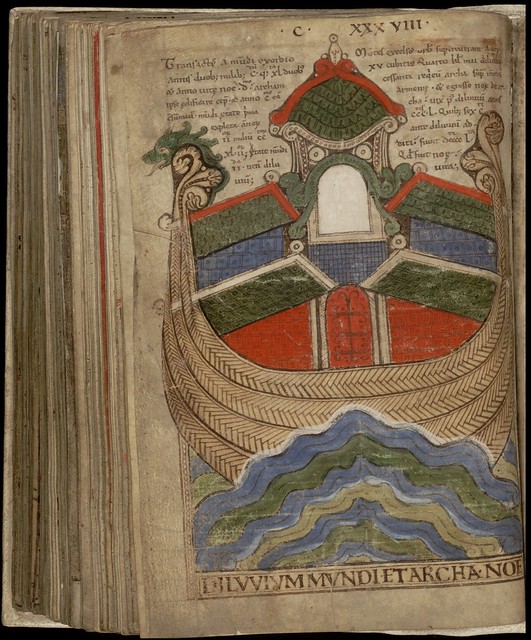
{Some of these page and detail images were spliced together from screenshots, but I didn't go to the trouble, in most instances, of generating very large images; click through to adequately enlarged versions. Mouseover above for approximated image titles}
The 'Liber Floridus' is essentially a compilation of extracts from nearly two hundred late Classical and early Medieval works by authors such as Isidore of Seville, Orosius, Julius Honorius, Pomponius Mela, Solinus, Venerable Bede, Rabanus Maurus, Pseudo-Callisthenes and Martianus Capella. There are, unsurprisingly, biblical dimensions to the manuscript, including a description of the Apocalypse, and the final illustration above depicts Noah's Ark, for instance.
Lambert's manuscript was completed in his own hand by ~1120 and is regarded as the first encyclopædia of the High Middle Ages. It chronicles the history of the world and describes the cosmos and man's place in the greater whole. Lambert's personal contribution to the work was confined to the fields of cosmography, geography and cartography.
The copious illustrations and idiosyncratic maps ensured that the manuscript came to be regarded as a classic, and up to eight extant copies of 'Liber Floridus' may have survived. [Three contemporary manuscripts exist: Ghent {MS 92} is the original {some of the ending is missing}; and mid-12th c. copies are located at Paris and Wolfenbüttel - these later copies weren't produced by Lambert's hand and contain full mappa mundi-type world maps]
After some modest reading around on the web, I have come to the conclusion that delving into the cartography - the most interesting aspect of the MS, in my view - is beyond the scope of this post. The various commentaries are more ambiguous than enlightening, because it's hard to properly identify the maps and editions under discussion. Nevertheless, I very much recommend examining the maps (and the rest of the MS) in the rather tolerable high resolution zoom frame at the source site. This manuscript - of about 300 folio leaves - is a real treat to look at closely.
"A medieval encyclopedia has little in common with the modern form of encyclopedia that we know. [..]
Instead of an alphabetical order and rational classification, a medieval encyclopedia has an organic structure. Knowledge is embedded in the images showing the world – a so-called ‘world view’. [..]
Many of these encyclopedias were intended to be used as didactic tools in convent and cathedral schools and, later, in universities. The Liber Floridus was probably used for teaching at the chapter school. The few entries in the Liber Floridus which Lambert did not write himself are assumed to have been done by his pupils."
- 'Liber Floridus' {MS 92} by Lambert, Canon of St Omer, is owned by Ghent University Library and hosted on a trilingual site (choose 'Online' to get to the actual manuscript).
- Overview of the maps at the Henry Davis site.
- Wikipedia article on 'Liber Floridus'.
- Wikimedia images (from other MSS)
- Amazon references to 'Liber Floridus'.
- Previously: Medieval :: cartography.
Tidak ada komentar:
Posting Komentar